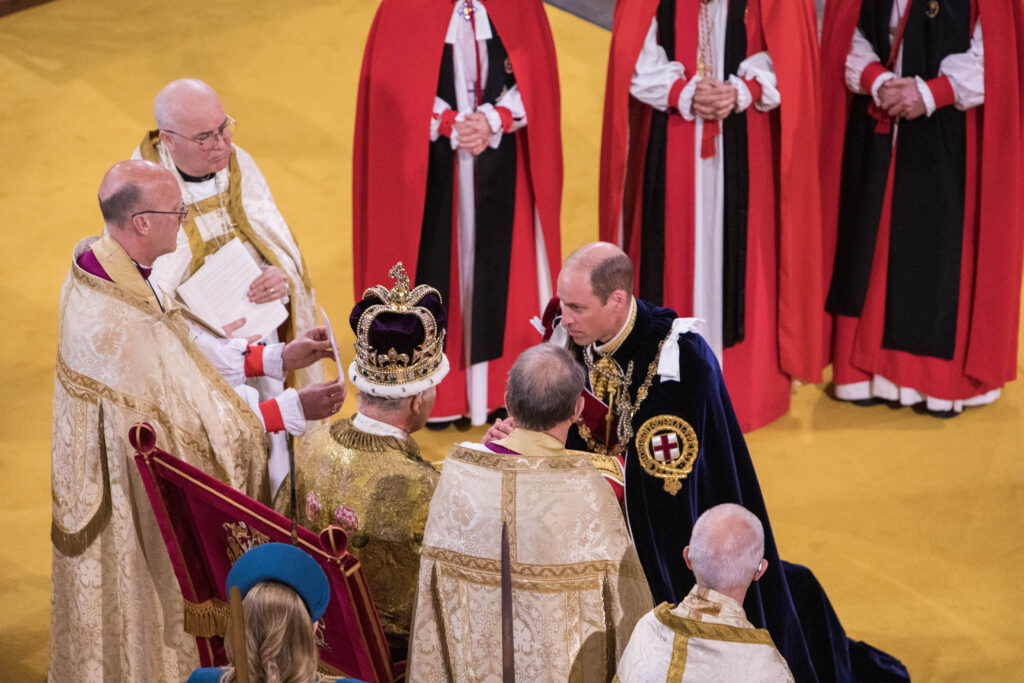Oaths of allegiance have always been sworn to the newly anointed and crowned Sovereign. Historically this helped maintain law and order within the Kingdom.
Following tradition, the Archbishop leads an oath known as ‘fealty’ on behalf of the Church, of which The King is Supreme Governor. Clergy within the Church of England swear an oath of allegiance to the monarch and their heirs and successors at their ordination, and again when consecrated as a bishop. Those bishops present at this coronation pledge these words of fealty again on behalf of the Church’s clergy to show their continued allegiance and support for The King.
Giving homage is a symbolic act to show respect and loyalty. In the case of the Archbishop and The Prince of Wales, they knelt before The King and placed their hands between The King’s hands. By doing this, they becomes a ‘liege man’ of the Sovereign. A ‘liege man’ historically has a mutual obligation to the monarch.
